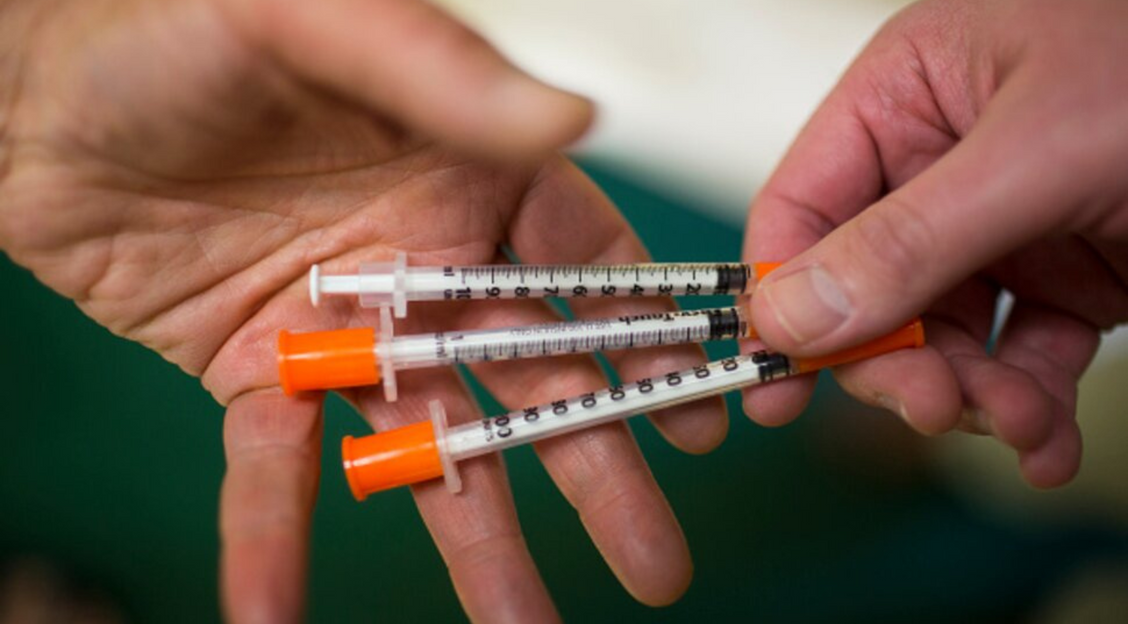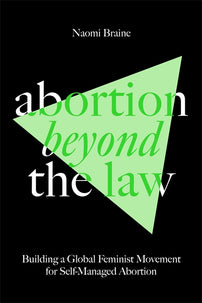Working in the grey area
Naomi Braine draws parallels between the current state of affairs for many self-managed abortion activists and her own experience in harm reduction through syringe distribution.

For movement activists, managing risk and maintaining security is always a balancing act, based not just on the letter of the law but also on political necessity, popular support, and local context. They approach questions of risk and security through perspectives that are broader than the technicalities of the law, but also not exclusively centered on the moral or political imperatives that motivate action. For the Ecuadorian activists who founded the first safe abortion hotline, consulting a lawyer was one of the steps, but their sense of security was primarily based in a set of political rather than legal calculations. On the one hand, they had deep connections to other movements that would stand in solidarity if needed; on the other, a general lack of interest in abortion at that time meant there would be no political benefit from legal charges. The activist quoted above later reaffirmed,
When I say we felt strongly supported, I mean it was support from people in organizations . . . We hadn’t done much work around security, we weren’t hardly worried about our safety.
Another longtime member of the hotline went on to draw comparisons between the early years and 2019:
The present context is a bit more restrictive. In 2009 there weren’t any women prosecuted for having abortions, and now there are. And there’s something else new, too—the fact that abortion is being globally discussed, becoming a hot topic in the public arena, generates a kind of insecurity . . . [In 2010] we engaged in direct action outside the public prosecutor’s office, there we were, flinging [symbolic] blood at the building and there was little risk of being arrested, but nowadays we think twice before performing those kinds of actions.
The laws in Ecuador have not changed from 2009 to 2019; however, the political and societal context has changed both within the country and internationally in ways that alter calculations of security and risk for the hotline collective.
An activist in Chile described accompaniment as taking place “en tierra gris” (in a gray area) in relation to the law, and these ambiguous spaces allow for approaches that don’t see legality as the primary factor shaping the possibilities for action. This is not unique to abortion activism, and I can offer an example from my own experience as a harm-reduction activist.
From the mid-1990s through the early 2000s, I was part of an unauthorized harm reduction/syringe distribution collective in Brooklyn, NY, that worked primarily in areas with significant homeless and sex worker populations. At the time, the New York State health commissioner had declared an extended public health emergency in regard to HIV among injection drug users, which enabled the health department to offer legal protection to formally authorized syringe exchange programs that followed certain policies; needless to say, we never applied for authorization—and couldn’t, because we did not adhere to restrictive state policies. The legal and authorized programs kept us well supplied with free syringes and other materials, despite the potential risks that this entailed for them.
No one involved had any meaningful legal concerns, despite the fact that our actions were technically in violation of laws regarding syringe possession and drug paraphernalia, and the authorized programs that supplied us with clean syringes violated the state policies that enabled their somewhat provisional legal status. We were all in what could be generously described as a “gray area,” and our safety came at least in part from our visibility, which is also true for SMA [self-managed abortion] collectives in Latin America and other parts of the world.
We operated within what could be thought of as a space of consensual blindness that included an array of official actors. The police harassed drug users but were uninterested in arresting a group of White harm-reduction activists who worked in squatter camps, sex work strolls, and other spaces that were relatively invisible to outsiders. Staff in the Department of Health branch that regulated syringe exchanges clearly knew what was going on, and occasionally joked about supply chains—but had no interest in clamping down on the situation since we were reaching high-risk populations in places that were distant from the authorized exchanges.
When I began working at a research institute that focused on harm reduction, the director told me very explicitly that I could no longer pick up supplies for the collective, since that put legal programs at risk, but otherwise what I did on my own time was entirely my business. In brief, our actions were relatively quiet but quite well-known, and the legal and policy violations (by multiple parties) were systematically ignored despite being visible and tacitly recognized. Our actions and those of our allies were strategic and calculated, but formal law and policy were not the primary factors shaping the space within which we operated. The existence of legal syringe exchange programs created space for our publicly visible, unauthorized version; in places where needle exchange is completely illegal, underground programs operate more carefully but they do exist and also work within a form of negotiated “invisibility.”
— An edited excerpt from Abortion Beyond the Law: Building a Global Feminist Movement for Self-Managed Abortion by Naomi Braine.
[book-strip index="1" style="buy"]
